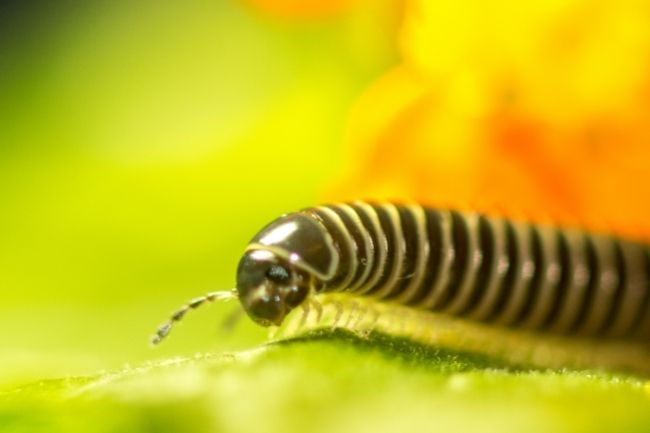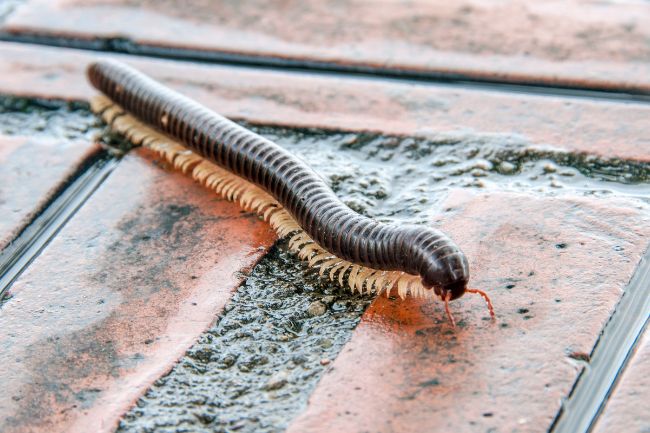Millipedes breathe through sets of spiracles that are located on each segment of their body. These spiracles act as holes to allow oxygen into the body. Air then moves down a series of tubes called trachea and is fed directly into the vital organs.
Contents
Take a breath
Take a deep breath. Though it may feel as natural to us as… well breathing, there’s a whole lot of complicated mechanics coming into play here, helping to feed your body with all-important oxygen.
Oxygen is one of the building blocks of life, it helps us to get energy from our food and is important in the creation of proteins and new cells. Almost all animal life relies on oxygen and therefore needs to breathe in some way or another.
If you’ve been holding that breath, then firstly well done, secondly, you can let it out now. As you breathed in, you will have felt your chest expand, and on breathing out it will fall again. This is down to a group of muscles that contract and create a vacuum in your lungs, pulling air in, and then relaxing causing the lungs to collapse again, letting air out.
The entrance for air into the lungs is through your mouth and nose. Once inside the lungs, the air is able to enter into blood cells which carry it around the veins and arteries that travel throughout your body, delivering it to muscles and organs.
This method of breathing may seem the most obvious, however, the majority of animals do not use it. Within other mammals, reptiles and amphibians we are used to finding a pair of lungs, and a mouth and nose connected to them, yet when we look at insects, who rather outnumber us, their method of breathing is entirely different.
A millipede’s breath

Many arthropods, such as insects, do not have lungs. This system of introducing oxygen into the body simply doesn’t scale down well. When it comes to millipedes, they have opted for an identical system to insects. Rather than breath through their mouth and nose (nose not being an option anyway as they don’t have one), they breathe through a set of holes in their exoskeleton knowns as spiracles.
Spiracles are small holes that are located in pairs on each of the millipede’s segments, below their legs. These holes then connect to tube-like structures known as trachea, which branch down till they directly feed air into the millipede’s organs and muscles.
| Respiration Method | Description |
|---|---|
| Spiracles | Millipedes have tiny openings called spiracles along the sides of their body |
| Tracheae | Air enters the spiracles and travels through a network of tracheae |
| Gills | Some millipede species have specialized gills for breathing underwater |
| Cutaneous Respiration | Oxygen can also be absorbed directly through the millipede’s body surface |
In this system, the oxygen isn’t transported by the blood, meaning the millipede’s blood doesn’t contain the haemoglobin that allows this to occur. When scared, millipedes can release a toxic substance, that is sometimes brightly coloured; however, this isn’t their blood. Instead, it is a special liquid designed to deter hungry predators from eating them.
Like insect blood, a millipede’s blood circulates in a very different way, being an open system. In this system, blood enters a long tube within the body that contains the heart and is then pumped into the insect’s body cavity, where it slowly circulates as the pressure of more blood is pumped in and pushes it forward.
This slow method of blood circulation means it would be difficult to get enough oxygen to the places that required it in time.
The waste gases are also released through the spiracles, which effectively serve the same process as us breathing in and out.
Also read: Millipedes: Do They Sting or Bite? (Explained)
Can millipedes swim?

Many people think that millipedes can swim, largely because they may have found some within the water. Millipedes are attracted to damp habitats, however, they draw the line at going to a dip. These tiny creatures need to live in damp areas as they are very prone to drying out.
This is in part because of the way they breathe, with the spiracles causing them to lose water over time. Yet, like humans, they aren’t able to breathe underwater and will drown if submerged for too long.
| Adaptation | Description |
|---|---|
| Tracheal System | Millipedes have evolved a tracheal system to facilitate efficient gas exchange |
| Spiracle Control | The spiracles can be opened or closed to regulate the flow of air and minimize water loss |
| Moist Environments | Many millipedes prefer moist habitats to prevent desiccation and maintain respiratory function |
| Behavioral Responses | Some millipedes exhibit specific behaviors to enhance respiration, such as seeking humid areas or burrowing into damp soil |
Sometimes a millipede will get out of its depth while searching for a nice damp place to rest. Once in the water, they aren’t very good swimmers, but smaller species can remain suspended on the surface of the water due to the surface water tension. It can however also be hard for them to break free from this. Eventually, they may succumb to a watery grave, or be picked off by a hungry fish or bird.
Breathe easy
Oxygen is an important ingredient to most life, and while the millipede’s method may appear to be very different from our own, it certainly gets the job done. Unfortunately, their system would not be suitable for creatures of our size, with air pressure simply not being enough to force the oxygen deep enough into our bodies. Good thing we have lungs instead.

